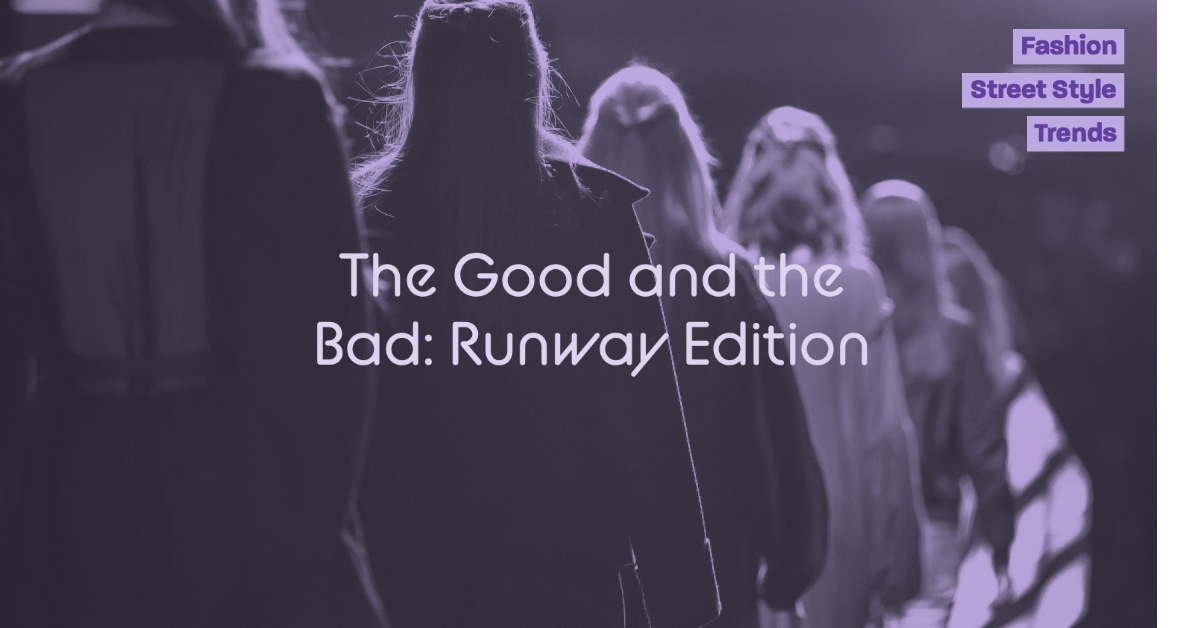By Theano Dimopoulou, Second Year, Psychology in Education
The Croft Magazine // Fashion runways can be a bit hit or miss. Over the years, certain designers have tried their best to stand out from their competitors. Sometimes those efforts for extravaganza, finesse or elegance are a great move and a win for the designers, the fashion world and the public. But, that is not always the case...
Starting off on a positive note, we are looking at one of Alexander McQueen's first runaways. McQueen made it clear, that he wanted to evoke a strong reaction from his audience. For SS '01, as a relatively new designer, McQueen delivered "Voss", a show that is still considered one of the most controversial fashion shows in history. Erin O'Connor, one of the models in the show was interviewed 13 years later and talked about her ripping up one of the McQueen's dresses on the runaway, the conversation with the designer and how liberating it felt when she did it.
With models like Kate Moss and Karen Elson, wearing revealing garments, inside an "observation box", the audience's lighting was dimmed so that the models couldn't see them, as if viewers were getting a glimpse inside the life of a patient in a mental hospital, hence this show also being referred to as the "Asylum" Show.
Another fashion landmark, and a personal favourite is the Christian Dior Autumn/Winter 1999 Haute Couture show. Taking place at the Orangeries in Versailles, John Galliano, presented a fix of futurism and The Matrix as well as historical references. Galliano said "The dresses are evil, evil. But you have to have the Romantic—they die for that, my ladies." The fusion of futurism and elegance are difficult to combine. That day, a perfect combination of two opposing notions was created, allowing a whole new era in fashion to commence.
Tim Blanks, an Editor-at-large at Business of Fashion described this show as "one of fashion's most famous turning points". Galliano up until that point had been creating "steadily escalating spectacles", with extravagant clothes and sets, which many at the time felt was "too much", and so, this show was so monumental as it provided such an unexpected fusion of the two styles for many.
Fashion shows do not always have the most positive effect on the public. An example of that is the Marc Jacobs show for SS '17. The designer was criticised for mainly casting white models to wear dreadlocks on the runaway. Critics pointed out the cultural appropriation and questioned why Jacobs did not choose to cast more black models.
Gigi Hadid experiences a dreaded runway moment https://t.co/3mzjM95sgV #MarcJacobsSS17 #NYFW pic.twitter.com/0SoL1dKHrH
— 9Honey | Style (@9StyleAU) September 16, 2016
What infuriated the public even more is the response of the designer after all the backlash. Replying to a comment below a series of images from his show M. Jacobs said, "All who cry ‘cultural appropriation’ or whatever nonsense about any race or skin colour wearing their hair in any particular style or manner - funny how you don’t criticise women of colour for straightening their hair". A lot of comparisons were made between black and white women and how hairstyles related to black culture, like afros and dreads may cause black women to lose opportunities and get bashed or ridiculed.
Another runaway criticised for cultural appropriation was the Valentino 2016 "Wild Africa" Collection. The designer was bombarded with accusations of cultural appropriation and ignorance particularly when it came to the lack of black representation in the show itself. In the show, only eight out of the show’s eighty seven looks were walked by black models. He was also accused of appropriating Native American culture for his designs.
As a conclusion, I think its safe to say, that appreciating a culture and admiring all that it can offer is a good thing, but completely disregarding it and using aspects of it for personal gain is a phenomenon that should have disappeared a long time ago. Ultimately, there is a fine line between appreciation and appropriation.
Fashion and feminism: a history
Project Co: Interview with UoB-student led accessible fashion project
Featured image: Epigram/Morgan Collins
Check out

